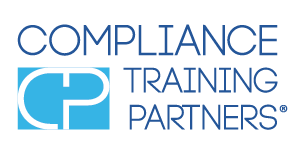Protect Your Patients.
Protect Your Practice.
Shock & Test Your Water in 3 Simple Steps!
To remain in compliance with CDC guidelines, you must ensure that you are properly maintaining your practice’s waterlines on a regular basis. This can be accomplished by following these steps for compliance success!
Step 1
Get Shocking!
Shocking dental unit waterlines is a MUST! This releases a strong chemical that eliminates contaminants from the line, and allows for other products used daily to do their jobs most effectively.
You Should Shock…
- Once every quarter (90 days) and more often if there is a problem with bacterial levels
- When new equipment is installed or a plumber has installed or modified the water supply system
- At a contamination level of 200 CFU/mL or higher
Once a shock treatment has been completed, you can continue your routine daily or weekly waterline treatments as usual – they will work more effectively following the shock!
Step 2
Routine Treatment
Shock treatments alone, once a quarter, are simply not enough to maintain compliance. Routine treatment of your waterlines with an approved waterline cleaner or low-level disinfectant should be performed. The products used for these treatments are completely safe, and do not pose a threat should staff or patients come in contact with them.
Remember that waterlines should be flushed briefly (20 seconds) between patients. Signs such as odor, cloudiness, or the presence of particles could be due to biofilm formation and testing of the waterline should be performed immediately.
Step 3
Quarterly Testing
In addition to regular shock treatment and daily treatment, your waterlines should be tested each quarter (every 90 days) to ensure compliance. Your water must not exceed the standard of safety, which is a bacteria level of less than 5000 CFU/ML of water.
If failure occurs, shock treatment should be performed immediately, followed by re-testing of the waterline system and dental unit waterline.
- Test your waterlines monthly for the next 3 months
- Begin to test quarterly after passing results have been reviewed for 3 consecutive months
Instructions for Waterline Shock Treatment
Step 1
Create Shock Solution
- Detach water bottle from chair
- Follow below for water-bleach ratio
- 1 part bleach to 13 parts water (8.25% concentration)
- 1 part bleach to 9 parts water (5.25% concentration)
Step 2
Re-attach Water Bottle
- Ensure the bottle is secure
Step 3
Run Your Solution
- Air-Water Syringe
- Run each syringe for at least 10 seconds. You will begin to smell the bleach or notice the feeling of it flowing from the tip.
- High & Slow Speed Lines
- Remove handpieces
- Place the connection into a sink or other receptacle
- Initiate the flush toggle switch (or step on the foot-pedal to get the solution flowing through the lines) until you smell the bleach solution
- Repeat at each handpiece connection
Step 4
Keep Time
- Set a timer for 10 minutes
- Monitor your 10-minute timer closely. Never allow bleach to reside in a line for more than 12 minutes
- When time is up, disconnect water bottles and discard the remaining solution
- Refill the bottles with fresh water, and flush all lines for at least two minutes, making sure that there is no more “bleach” smell
Dont' Forget
NEVER flush bleach into vacuum or drain systems containing an amalgam separator, as this has the potential to leach mercury from the separator, putting it into the waste stream.
NEVER leave shock solution in your waterlines for more than 12 minutes.
ALWAYS wear proper protective equipment when shocking, including mask, gloves, protective eyewear and long sleeved fluid-resistant clothing.
FAQ
Shock treatments should be done if work has been performed on the waterlines/plumbing. You must also shock regularly each quarter, and anytime a waterline test reveals concerning contamination levels (200 CFU of bacteria/mL of water or more).
Clean lines are safe lines! By regularly keeping up with shock treatment, waterline cleaning and testing, you will be actively decreasing the chance biofilm will grow.
Yes! Bleach solution, as long as it is monitored carefully, never left in lines for too long, and is properly cleaned out following treatment, is a safe and effective chemical agent for removing bacteria and biofilms.

